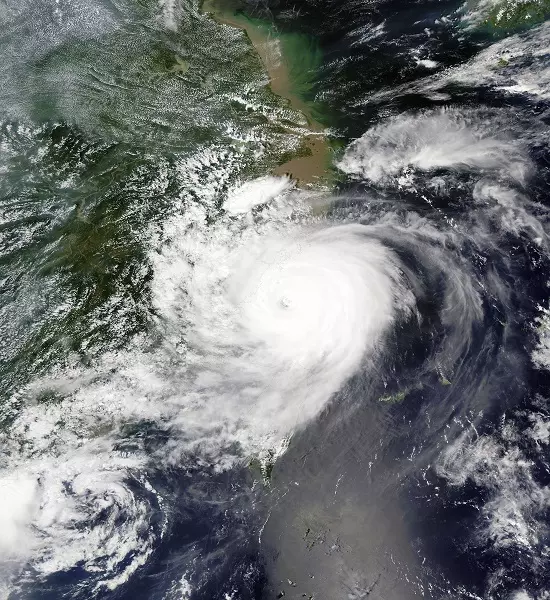The five mega forces we’re tracking

Demographic divergence
Aging populations in major economies are poised to limit how much countries can produce and grow. By contrast, selected emerging market economies can benefit from younger populations and growing middle classes.

Digital disruption and artificial Intelligence (AI)
Artificial intelligence can automate laborious tasks, analyze huge sets of data and help generate fresh ideas. Digital disruption goes beyond AI.

Geopolitical fragmentation and economic competition
In a marked departure from the post-Cold War period of increasing globalization, we see countries favoring national security and resilience over economic efficiency.

Future of finance
A fast-evolving financial architecture is changing how households and companies use cash, borrow, transact and seek returns.

Transition to a low-carbon economy
The transition to a low-carbon economy is set to spur a massive reallocation of capital as energy systems are rewired.
Q: What’s different about this macro regime?
WEI LI: As we think about this new regime also in the context of markets, I think 2023 will be remembered as the year when markets accepted and embraced higher for longer. And here we’re not just talking about this particular cycle that will be more shallow in terms of rate cuts compared to before, but we’re also talking about structurally central banks having gone from previously having an easing bias in a world of steadily growing production capacity to now having a tightening bias in a world of supply constraints that could push inflation structurally higher.
Q: What’s the portfolio construction impact of some of these macro forces?
WEI LI: As we think about the macro forces shaping the new regime, I will make three observations that have impact on portfolio construction. The first observation is around the new environment for fixed income investing. So, here, we just simply look at the income cushion of fixed income exposures. They have increased meaningfully across the board, and in the case of the front-end treasuries even tripled. What does that mean? It means that it’s going to take a lot more rate increases from here to offset the income that you can get within a year, which makes bonds more attractive.
The second observation is around private market. So, as we think about the new portfolios in the new regime as they compare to the traditional 60/40, it has a greater allocation to private market, but we want to be more selective within private market given the higher rate environment.
And the third thing I would say is to specifically single out AI as a mega force as we think about building portfolios for the new regime. So, AI actually has the potential, technological advancement has the potential to lower the rate and push higher growth and offset the impact of some of the mega forces. So, this is definitely a mega force that we like in portfolio at this moment.
Q: What market catalysts or indicators are you watching most closely?
WEI LI: As I think about market catalyst, we are talking about regime change, we are talking about going from a period of great moderation, Goldilocks type of investment environment to the new regime of higher macro uncertainty. I would kind of divide market catalysts into kind of two periods.
The first period is the adjustment period, and the second period is what do we do in the new regime? So, the adjustment period is when markets wake up to the new regime, adjust to the higher rate environment, which can be quite volatile, which is exactly what we have seen in 2023. Rates have resetted [sic] higher. You look at equity market. It is a very concentrated market. Equal weighted US equity market is actually down on the year, right? So, we’re talking about this transition period, this adjustment period being quite volatile. We are watching very closely in terms of how different asset classes are reflecting this new regime.
And the second phase is more exciting because we are talking about an environment where adjustment has already taken place. Then what do we do with our portfolio construction, and I think at that point, there will be more opportunities in terms of individual exposures, but also in terms of holistic portfolio construction.
Q: What’s on the horizon for BII to help investors learn more about this and harness these mega
WEI LI: So, BII has identified the five mega forces. And I think in terms of the educational effort, we really want to unpack the impact of mega forces on the macroenvironment. What does it mean for rates, what does it mean for growth, what does it mean for inflation? But we also want to unpack further on the educational side in terms of how do we position portfolios to really benefit and capitalize these mega forces?
And currently, our thinking around portfolio incorporation of mega forces is really on two fronts. The first is doing it holistically. So, here, what we’re doing with the BIITS the BlackRock Investment Institute transition scenario, and the climate aware capital market assumption is exactly that. It incorporates our best assessment of the transition on growth, on inflation, on central bank response, and we input that into portfolio optimization, and we have the output holistically that already incorporated the consideration of this particular mega force.
So, holistic adoption is the first approach. The second approach in terms of incorporating mega forces in portfolio construction is thematic overlay. So, here AI is a great example because the impact of AI on the macroenvironment is still playing out. It’s still very early days. So, any guess will carry a huge uncertainty bend, and we don’t want to wait until when we have all the answers before we incorporate that in portfolios, which is why we are considering AI as a thematic overlay, thinking about the semis, the CHIPS, the data infrastructure center, the apps, the use cases, not only public market but also private market. But it doesn’t quite kind of holistically input into portfolio optimization metrics but rather think of that as a thematic sleeve at this juncture.
Q: What’s on the horizon from BII to help investors learn more about and harness these mega forces?
WEI LI: I will say three things. The first is around understanding the impact of mega forces on macroenvironment going forward. So, what does mega force to growth, to inflation, to real rates, to nominal rates? So, we’re mapping that out per individual mega force. The second is around the portfolio construction, the investment implication of these mega forces, and we sometimes think of that as thematic overlays. So, take AI as an example, that is currently a thematic sleeve in our portfolio offering.
And then the third piece is really around how to articulate this and represent this bringing the best of BlackRock thinking into our offering as we take our outlook on the road, as we bring that together, and that will both include both how we are thinking through the macro impact to the investment implication, but also how our investors are actually doing that from a practitioner perspective, and that’s what BII looks to bring to the table as well.
Exploring the mega forces with Wei Li
Global Chief Investment Strategist, BlackRock Investment Institute
Adopting new technology
The key to harnessing mega forces and their potential is to first identify the catalysts that can supercharge them and how they interact with each other.
Rapid adoption of technology can change the path of transitions. Markets can underappreciate the speed of transitions, creating investment opportunities. Conversely, exuberance over their potential can also cause temporary price spikes. AI has been turbocharged by the roll-out of ChatGPT and other consumer-friendly tools. We think markets are still assessing the potential effects as AI applications could disrupt entire industries and bring greater cybersecurity risks across the board.
Related content
Grabbing the wheel: putting money to work

Filter by:
- All
- Demographic divergence
- Low-carbon transition
- Future of finance
- Digital disruption and AI
- Geopolitical fragmentation


